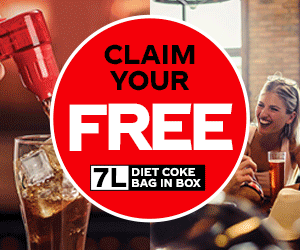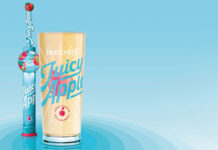Firms reckon soft drinks are now more popular than ever

IN recent years, the trade has been in a state of flux, with customer expectations and desires continuing to change.
With some customers choosing not to drink alcohol when they go out, and many operators looking to make their premises more appealing to families, soft drinks arguably now have a more prominent role in the trade than ever before.
“The soft drinks market in the Scottish on-trade is growing, especially in food-led outlets,” said Adrian Troy, marketing director for AG Barr, adding that the category is evolving and “consumers want more choice with fast-growing demand for sugar-free products that really deliver on flavour”.
Taking a similar stance Justin Horsman, marketing controller at Franklin & Sons, commented that this shift in demand could be partially down to a change in consumers’ overall lifestyle choices.
He said: “Changing lifestyles and a growing interest in health and fitness are likely to have a greater bearing on choice and behaviour for some consumers. With the spotlight on health, customers are more aware of the ingredients of the drinks they buy.”
Ed Jones of Vimto parent firm Nichols agreed, commenting that those aware of sugar levels “have typically moved away from mainstream soft drinks due to concerns over sugar”.
This shift in consumer habits is also driven by younger consumers “who drink less alcohol”, reckons Andrew Jackson, marketing director at Fentimans.
Instead, they are increasingly looking for “interesting brands and are more concerned with provenance and quality” in outlets’ soft drinks offers.
Jackson said: “For bars to appeal to this increasingly important consumer demographic, they need to offer a premium product range from brands that offer a tangible point of difference.”
The soft drinks market in the on-trade is growing, especially in food-led outlets.
To capitalise on the growing demand for quality and provenance in soft drinks, operators must be “putting as much effort into their drinks offering as their food”, according to Russell Kirkham of Britvic.
He stressed that factors such as presentation are key to maximising soft drinks sales.
“Interesting glassware and garnishes on your soft drinks serves are small investments in time and money which can really help to enhance the drinker’s experience and inspire repeat purchase, so make sure your bar is stocked with fresh fruit, herbs and even flowers to add theatre to your drinks,” said Kirkham.
In fact, the rise in popularity of soft drinks is intrinsically linked to food, say firms, and so outlets are advised to consider including pairings on their menus.
“When matching food to soft drinks try to match the flavours as you don’t want the drink to overpower the food or the food to overpower the drink,” said Dave Ward, on-trade controller for Fentimans.
He added that citrus and carbonation “also work as excellent ways to cleanse the palate” in between courses.
Echoing this view was Horsman of Franklin & Sons, who said: “With more consumers choosing soft drinks over alcohol to go with their meal it is important that premium soft drinks accommodate these pairings.”
Westminster’s planned ‘sugar tax’ – scheduled to come into force in April 2018 – could also help to increase demand for premium soft drinks, according to Ward at Fentimans.
“Following the introduction of the sugar tax, operators will need to address their soft drinks ranges and the way that they are served,” he said.
“Free refills may no longer be socially responsible and commercially unviable.
“A visit to the pub is a treat and soft drinks ranges should be reflective of this.
“Operators will need to move away from the current formulaic offering and provide more premium soft drinks that consumers are prepared to pay more for.”

























